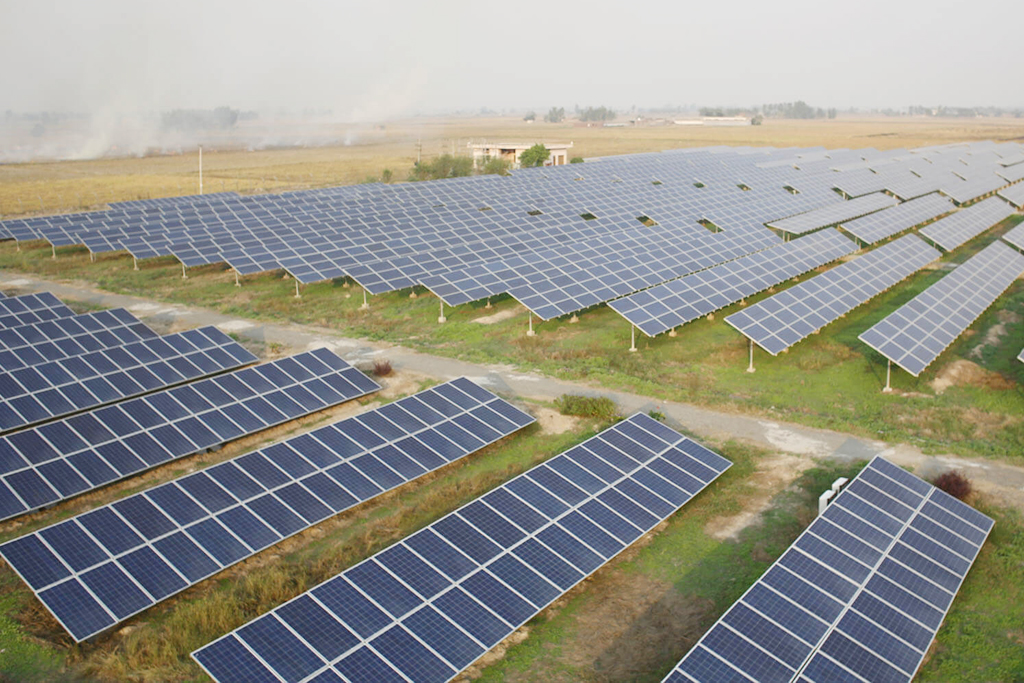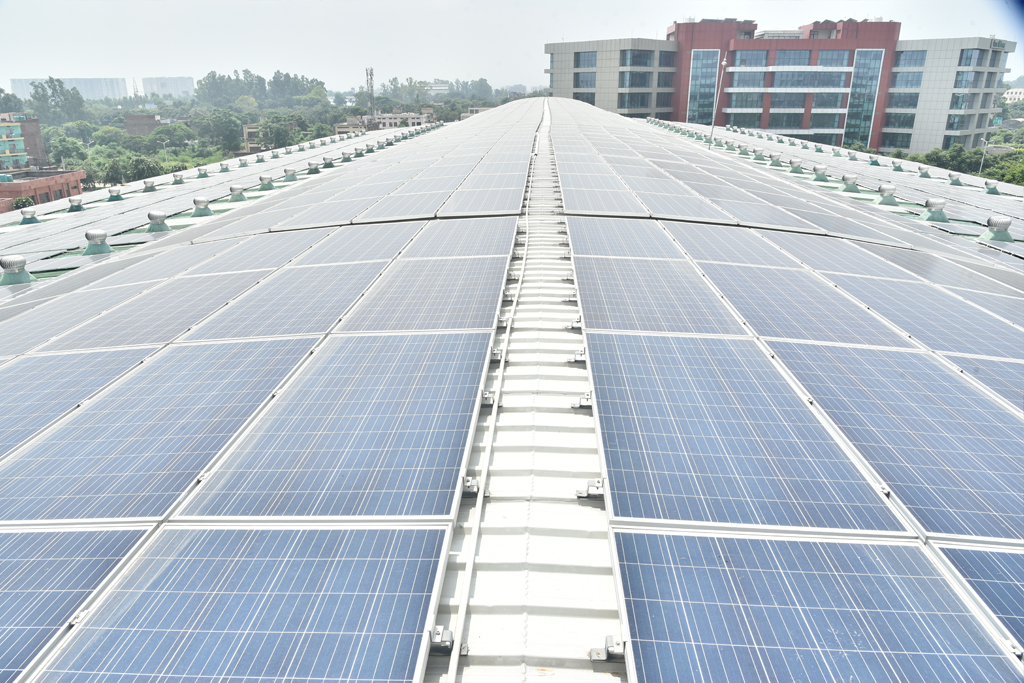In 2018, the solar power industry saw a 24% increase in its y-o-y capacity additions, while hydropower saw 2% and wind energy saw a 10% increase). Although a majority of the solar capacity additions were dominated by Asia, new markets like Brazil, Saudi Arabia, Egypt, Spain and Latin America saw considerable growth.
The remarkable upsurge in private participation in the power sector in India and the government's thrust on renewable energy is in sync with the country's solar overdrive in pursuit of the 100-GW target for solar projects, there are impeding issues like tender cancellations of mega projects. China's policy shift, feed-in-tariff cut in Japan, and policies levying of taxes and duties on solar energy industry in India limited solar sector growth in 2018, but the solar sector is expected to bounce back in 2019.
With the tender process picking up pace in FY 2019-20, we have a lot to look forward to this year. Pursuing a 40-GW target, the government is also all set to give a big push to the rooftop segment through favourable policies like net metering.
Solar Power is India's Green Future as it presents a great opportunity to phase out fossil fuel and its growing expenses while transforming the country with industrial, social, and economic growth. The future of solar energy in India largely depends on achieving the ambitious solar power generation target of 100 GW by 2022. With the cumulative solar capacity going up to 36.36 GW, as on June 30, 2019, the market sentiment is upbeat because of the record number of installations.
We believe that by 2030, India's solar industry is poised to grow phenomenally. The country will need $250bn in green energy funds from 2023 to 2030. Investment opportunity for over $30bn per year is expected to come up in the next decade, according to the Economic Survey.
Significantly,India is running the world's largest renewable energy programme. Solar power generatio holds the key to the unprecedented growth India needs to register to get to the magic figure of 100 GW. Fuelling the ever-growing needs of practically all the other key sectors, the power sector forms the backbone of our rapidly expanding economy. Since sustainability is at the heart of all development efforts directed towards building a New India, the country is aiming at increasing the share of renewables in the total installed power capacity to 50% by 2030 with a major chunk coming from solar energy. This is in tune with another dimension of Vision 2030 which foresees India as a pollution-free nation with green environs and blue skies. Renewable sources in general and solar power in particular can make all the difference here as a major source of energy supply.
It is pertinent to mention here that about 40 per cent of the power capacity installed in India this year is solar. All-out efforts at transforming the energy mix are under way. In the Indian solar market, almost every passing tender has promised to deliver cheaper electricity. The solar industry is entering a period of cost efficiency, thanks to advances in technology and competitive bidding. Solar power tariffs in India have plunged to a record low of Rs 2.44 per unit, which will push demand in a big way.
The solar industry has witnessed rapid growth in the last few years and is expected to grow even more in coming years. To encourage the shift from environmentally detrimental sources of energy to cleaner alternatives, the government has been playing an active role by introducing several incentives, such as GBIs, capital and interest subsidies, which are likely to reduce the dependency on conventional energy and increase adoption of solar power.
These measures involve setting up several small solar projects on barren land and introducing solar water pumps.
To further encourage the adoption of solar power, a slew of welcome initiatives have been recently introduced by the government, which have been welcomed across the industry. This includes the imposition of BIS standards on solar imports, besides ensuring adherence to the quality of products instead of mere price benefits. Another welcome step in the concept note released by the MNRE proposes the development of 10 GW of manufacturing capacity over a period of five years, which focuses on both poly-silicon and wafer manufacturing to create integrated silica-to-modules packages and intermediate standalone packages or combinations.
One of the biggest advantages of solar power is the ability to avoid the politics and price volatility that is increasingly characterising fossil fuel markets. While the prices of fossil fuels have increased, the per watt price of solar energy production has more than halved in the past few years, and is set to become even cheaper in the near future as better technology and economies of scale come into effect. The first benefit of using solar panels to generate electricity is that they do not produce any environmentally detrimental greenhouse gases.
Renewables account for a sizeable share of the power capacity additions, highlighting the significant investment flowing into the solar sector in particular. No wonder, India has emerged as the third largest solar market globally. But we still have a long way to go to become a global solar superpower like China and US.
To achieve the target, India needs heavy investment in coming years. A major part of it has to be raised within the country, as the renewable sector could so far only attract a foreign direct investment (FDI) worth $7.5 billion in the last 18 years (2000-2018), according to a report by the India Brand Equity Foundation.
The solar sector can accelerate its growth by focusing on manufacturing and supporting domestic solar panel manufacturing industry with sizeable investments. This will help India scale greater heights like China, which penetrated foreign markets by undercutting their market prices. By working overtime on its solar panel manufacturing capacity, China was able to support its own solarisation, ring in revenues from exports and create jobs. India needs to follow a similar roadmap.
We need to pick up on the domestic manufacturing front. Various efforts by the Solar Energy Corporation of India (SECI) to attract bids for the development of the inter-state transmission system for solar power evacuation have gone in vain. Solar power generation has to be in sync with the growth in transmission capacities owing to evacuation challenges, otherwise we may be in for a slowdown.
Though rooftop solar is the fastest growing renewable energy segment in India, the installation capacities must rapidly increase if the nation is to meet its ambitious renewable energy target by 2022. Conducive policies, financial support and consumer awareness should form our focus of attention.
Around 70 per cent of the market growth in rooftop solar is driven by commercial and industrial consumers. The residential segment is lagging owing to lack of policy initiatives. The 20-40 per cent financial subsidy for new residential rooftop solar installations should accelerate the pace of growth. But India needs a more comprehensive approach in order to achieve the 2022 target.
The industry needs to be steered in the right direction to take us closer to the 100-GW goal. We need integrated energy planning, favourable policies and investments across the value chain. Release of RTC tenders and incentives for OA charges are critical. RTC supply is one alternative to ensure predictability in supply, thereby ensuring grid stability and offtake guarantee by discoms under all circumstances.
While on one hand we need to promote solar projects based on domestic manufacturing capacities to make ourselves self-sufficient, the Central and state governments should take care not to put the auction process on hold in the expectation of a further drop in prices. We also direly need a universal anti-dumping policy and incentives to instill confidence in Indian companies. Investing in domestic manufacturing can help build the supply chain, control prices and earn foreign exchange through exports. It will also create jobs, enhance the country's GDP and correct the adverse balance of payments.
India should leverage its position in the 121-nation International Solar Alliance by assuming a leadership role to make way for greater growth through favourable policies and coordinated efforts. As a global solar superpower in the making, we ought tp wrest this initiative. With a proactive approach driven by all these factors, India's solar Power will usher a green and sustainable future.

.jpg)
